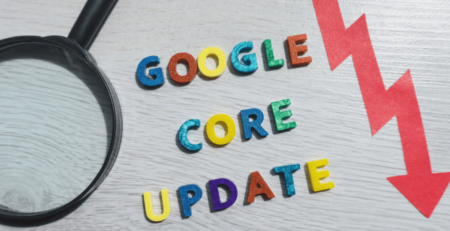P&L Marketing Explained
The P&L (profit and loss) statement is one of the three main financial statements that every company should build, regardless of the type of business. The other two are the balance sheet and cash flow statements.
The P&L is an effective tool for managing a business since it paints a clear picture of how much money you’re making or losing, and enables you to make accurate predictions about the future of your business.
If you haven’t created one and don’t know how you’ve come to the right place. In this post, you’ll learn:
- What P&L marketing means
- The importance of a marketing P&L
- Profit and loss marketing metrics
- How to create profit and loss statements
What Does P&L Stand for in Marketing?
A marketing P&L or profit and loss statement is a financial statement that summarizes the costs associated with a business’ marketing initiatives. To understand a marketing P&L well, think of the traditional P&L, which summarizes a company’s revenues, costs, and expenses incurred during a specific period, usually a quarter or fiscal year.
These records provide an overview of a company’s financial performance. That is, the ability or inability to generate profit by increasing revenue, reducing costs, or both.
A marketing P&L shares a similar set of entries to a conventional P&L, such as:
- Revenue
- Cost of sales
- Gross profit
- Gross margin
- Operating expenses
- Operating profit margin
However, there are certain metrics that a standard financial statement doesn’t include. These are:
- Customer acquisition cost
- Gross profit per customer
- Retention
- Customer lifetime value
- Annual revenue per customer
- Payback period
We’ll delve deep into these metrics shortly. First, let’s talk about the importance of a marketing P&L.
Is a Marketing P&L Important for My Business?
If you want to know how much your business has spent and earned over time, you must create a profit and loss statement. The statement adds up your total revenue and subtracts your total expenses to give you net income.
But the marketing P&L shows much more than that. It breaks down each of the income and expense entries to determine your company’s current financial situation. The report provides you with insights into your company’s performance so you can understand its profitability level.
These breakdowns allow you to see exactly how much you’re making on your products or services, and the products with the highest gross margins. The gross margin is calculated by subtracting the cost of goods sold (COGS) from the revenue to get the gross profit.
Gross Profit = Net revenue – Cost of Goods Sold
The gross margin is a key metric for your business since it helps you determine how much you can spend on marketing and other expenses to achieve profitability.
In a nutshell, in marketing, creating a P&L enables you to identify marketing as an investment for growth rather than a cost of doing business. Unlike a standard marketing budget that only shows the expenses without reflecting the ROI, a marketing P&L will clearly show the impact of every dollar spent on marketing on your revenue and gross profits.
As a result, you can create a more flexible marketing budget that will drive long-term growth – within an agreed ROI constraint – without worrying about wasting time, effort, and resources.
Profit and Loss Marketing Metrics
Now that you understand what P&L marketing is, as well as the various P&L marketing metrics, let’s dive into the specifics of what they mean.
Customer acquisition cost (CAC)
Customer acquisition cost (CAC) is how much money your business is spending to bring in a new customer. CAC entails many marketing expenses, including:
- Email marketing campaigns
- Paid ads
- Sales reps
- Marketing automation tools
- Content marketing expenses
This list will vary depending on how much you’re spending on customer acquisition costs. To calculate CAC:
CAC = [Total costs of sales + Total cost of marketing] / New customers acquired
This metric shows if you’re spending your marketing budget efficiently.
Gross profit per customer (GPC)
You also want to know how much money your business is making from each customer. The higher the gross profit per customer, the more money you’re making from each customer.
GPC is calculated by dividing the total revenue from each customer by the total number of customers you have.
Customer retention
Customer retention plays a huge role in the profitability and overall success of your business. Any good marketing strategy factors in effective methods to nurture existing customers and upsell them.
The customer retention rate is calculated as follows:
CRR = [{E-N}/S] x 100, where E is the number of customers at the end of a set time period, N is the number of new customers attained within the time period, and N is the number of customers at the beginning of a given time period.
Customer lifetime value (CLTV)
The customer lifetime value metric is used to measure how much your business can make from each customer throughout their lifetime as a paying customer. Combined with CAC, you can get a pretty clear picture of how much you’re spending on acquiring a new customer vs. how much the customer is spending on your business.
CLTV has several benefits, such as identifying high-value customers, knowing how much to invest in customer acquisition, and building brand loyalty. To calculate CLTV:
CLTV = Customer value x average customer lifespan
Where: customer value = average purchase value x average number of purchases (or purchase frequency)
The average purchase value = total revenue / total number of purchases
To find the purchase frequency, divide the number of purchases by the number of unique customers.
Annual revenue per customer (ARPU)
ARPU is another crucial P&L marketing metric. It helps you understand how much revenue is coming from a single active user monthly, quarterly, or yearly. The ARPU is a high-level KPI that gives you an overall insight into your brand’s health.
A decreasing ARPU is a red flag that indicates a possible disconnect between what you offer and what the customer wants. ARPU also shows if you’re generating sufficient topline revenue to meet your business objectives.
To calculate the average revenue per user:
ARPU = Total Revenue / Total Number of Users
Payback period
Customer acquisition and retention are investments, and you’d want to know if your investments are paying. The payback period KPI measures how much time it takes to recover the initial cost of investment or reach its break-even point.
As a marketer, you want an investment that will pay back within the shortest amount of time. This metric can be beneficial to startups with limited capital that want to ensure they can recoup money without going out of business.
To calculate the payback period:
Payback Period = Cost of Investment / Average Annual Cash Flow
How to Make a Profit and Loss Statement
With the P&L marketing metrics out of the way, you can proceed to create a marketing P&L statement. You’ll need certain key information to create this financial statement. Usually, your cash flow statement and estimated depreciation – which you can get from your tax advisor – provide most of this information.
Other information you’ll need to include in the profit and loss statement include:
- Receipts from petty cash.
- Sources of income, e.g. checks and credit card payments.
- Marketing spend – how much you spend on marketing in a specified period.
- Marketing revenue – the amount of money you’ve made from your marketing investment in the specified period.
- Cost of goods sold, which you can get by multiplying the COGS per product by the total number of products sold.
- Gross profit, excluding marketing spend (revenue – COGS)
- Gross profit, including marketing spend (revenue – COGS – Marketing Spend)
Once you have all the relevant information, you can create your P&L statement. Here’s an example of what a marketing P&L looks like:
My company
MARKETING PROFIT & LOSS STATEMENT
For the year ended December 31, 2022
| PARTICULARS | AMOUNT ($) | AMOUNT ($) |
| No. of months as a customer (12) | ||
| Marketing Spend | 15,000 | 15,000 |
| Revenue | 300,000 | |
| Cost of Sales | 95,000 | |
| Gross Profit (Excluding Marketing Spend | 205,000 | |
| Gross Profit (Including Marketing Spend) | 190,000 | |
| New customers
CAC CLTV per User (projected) Annual Contract Value Payback Period (months) Gross Profit per User |
|
400
800 3,000 1,500 5.78 2,400 |
| ROI (LTV/CAC) | 3.75 |
Use Marketing P&L to Understand Your Cash Flow
As you can see, a marketing P&L can help you understand how much money you have and how fast you can invest in growth. The profit and loss statement gives you an overview of your marketing efforts in relation to business growth and profitability. The information can prove valuable when allocating resources to reduce waste.










